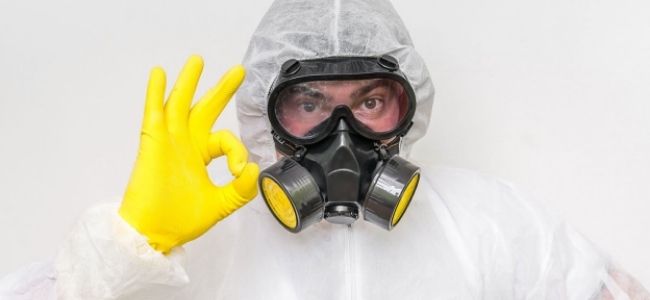Finding mold in your home brings on a giant wave of stress, and having strangers in outfits straight out of a sci-fi movie, using serious chemicals inside your home can only make it worse. It is clearly a disruptive situation and a bitter price to pay when you don’t have the slightest idea of how to go about mold infestation in your home.
Mold remediation technicians are a phone call away, still many are often led to the top 2 most frequently asked questions when it comes to mold inspection or remediation, which are;
“Am I safe during the mold remediation process?”
“Do I need to leave my house open and vulnerable during remediation?”
The answer to both questions is simple. It pays to know and trust your mold remediation specialist. Here are a few worthy steps to follow as a guide for selecting a stress-free mold remediation service.
The Dark Side of the Mold
Mold, also sometimes referred to as mildew, is a natural part of the environment and believe it or not, plays an important part in nature by breaking down dead organic matter. However, mold thriving indoors is highly undesirable, should be avoided and its growth nipped in the bud.
In a nutshell, mold is a fungal growth that develops on wet materials. It’s the stuff that darkens the corners of the bathroom, stains the walls, and grows in between tiles. Mold infestation inside the home is an unpleasant sight which can accumulate and become hard to remove over a period of time.
There are different types of mold, most of which also cause respiratory diseases and are generally bad for our health. Mold can release spores into the air that can cause allergic reactions. These allergens may be invisible to the eye but can cause serious health problems in the long run. This is where mold remediation becomes relevant.
As it is, any type of mold infestation is definitely a major problem in any household. Once discovered, however small the infestation or presence of this health-threatening fungus looks, do not be tempted to clean it up on your own. Mold remediation is a task that is better left in the hands of professionals.
Mold remediation is a process that involves cleaning up existing mold infestations from within an area inside your house and making sure that it never comes back. Going the Do-It-Yourself route is not the way to go when dealing with high risk infestations. Hiring a professional mold remediation service may be costly, but it surely gets the job done.
That’s why it’s important to choose wisely when hiring a service, making sure that the safety and security of your household will always be intact.
What to expect during Mold Remediation?
Depending on the location and scope of infestation of mold on the property, the safest option is for you to leave the property during the duration of the remediation. Experienced mold removal and remediation service companies will always recommend that you leave the property for you and your family’s safety. Sometimes, recommendations can go to the extent of renting out alternative housing for the entire remediation period.
Due to the fact that the use of heavy chemicals will be highly involved in the process of mold removal, it is imperative that access to the remediation zone during this period is cleared before a service team is deployed for everyone’s safety.
Here’s what comes next:
- A service crew from the mold remediation company will then park the service truck as close to the house as possible. They will proceed to lay plastic sheeting down and run hoses from the doorway to the identified area of infestation.
- The mold remediation crew suits up in head-to-toe overalls or protective suits, booties, respirators and goggles. They are required to do this on every job, toxic mold or non-toxic.
- The spraying of the mold infested area with an EPA-approved biocide (mold killer) begins.
- The workers leave while the biocide does its thing.
- On the following day, the mold remediation crew is due to return. They go through the same steps 1 and 2 and then proceed to spray the mold area with an encapsulant. An encapsulant is a type of chemical that encloses (as if in a capsule) any mold spores that remain. Spraying beyond the treated area to eliminate any chance of mold growth is essential and should not be confined to a single spot.
- Using a HEPA (High Efficiency Particulate Air) vacuum, the remediation crew then begins to clean the floor or any surface that can be vacuumed to remove stubborn spores that linger.
- The service crew then cleans the air with a HEPA air scrubber, which then allows an air exchange to take place. This process replaces moldy air with clean, fresh air.
Now that questions have been answered and expectations have been duly addressed, everything boils down to choosing the right mold remediation contractor.
Depending on your location, mold remediation service professionals are but a phone call away – check out Tampa mold remediation as an example. Doing a proper background check on a shortlist of chosen companies will certainly take the load off on the selection process. Checking on guarantees and certifications will help to lighten the burden, and the bottom line should always be the quality of service involved.


